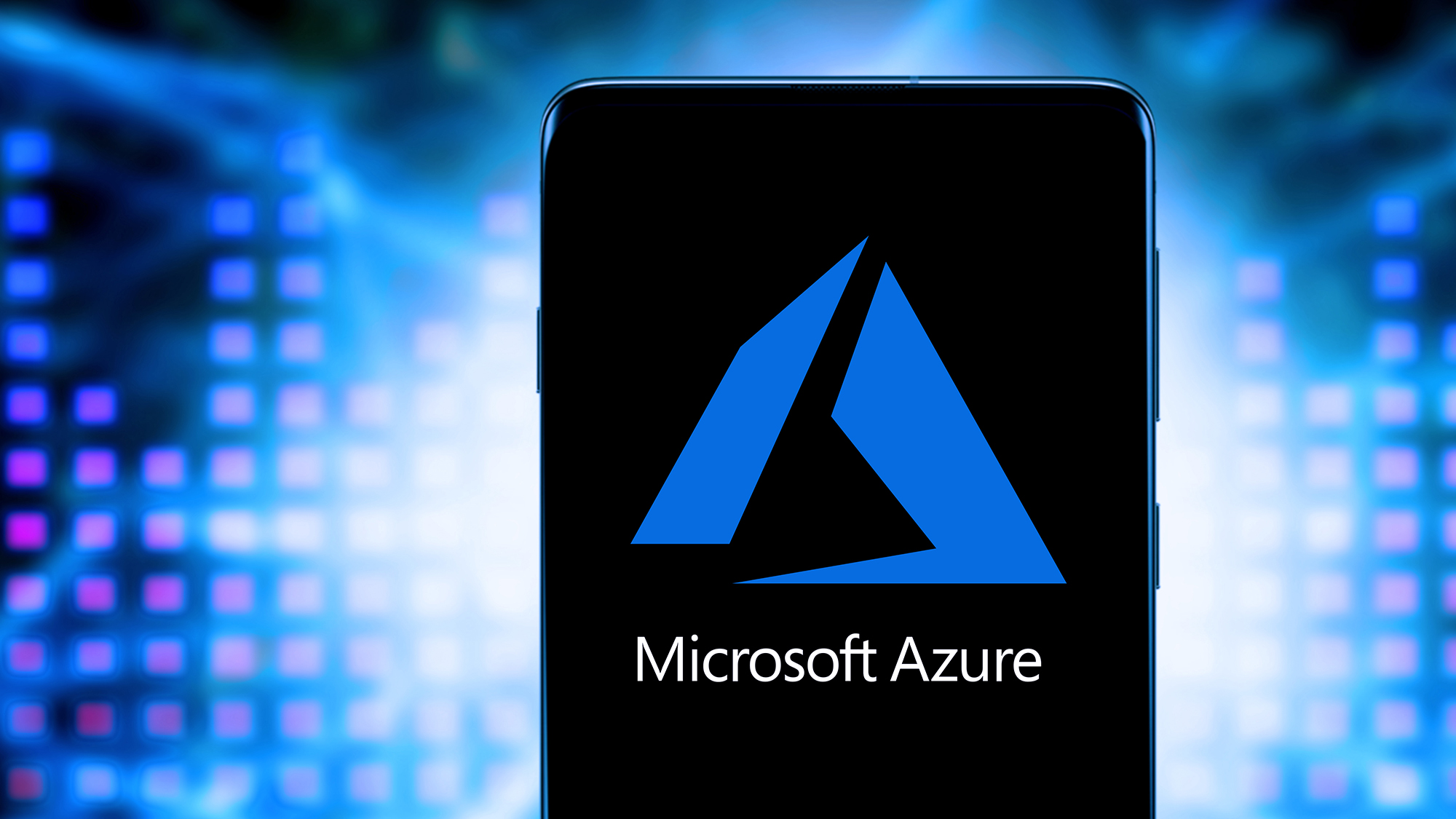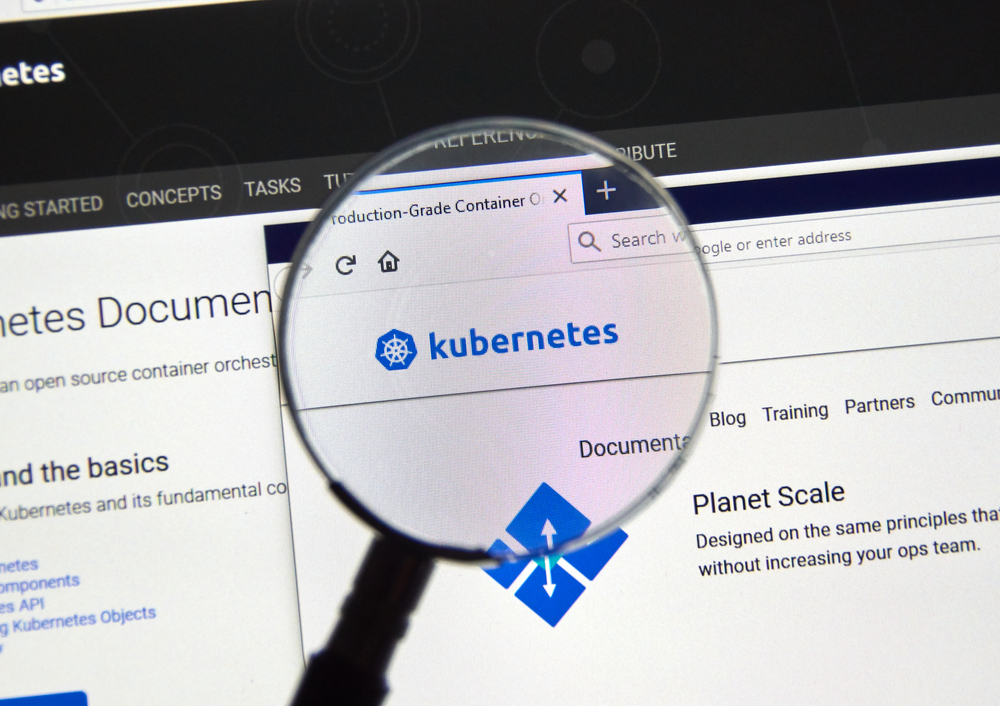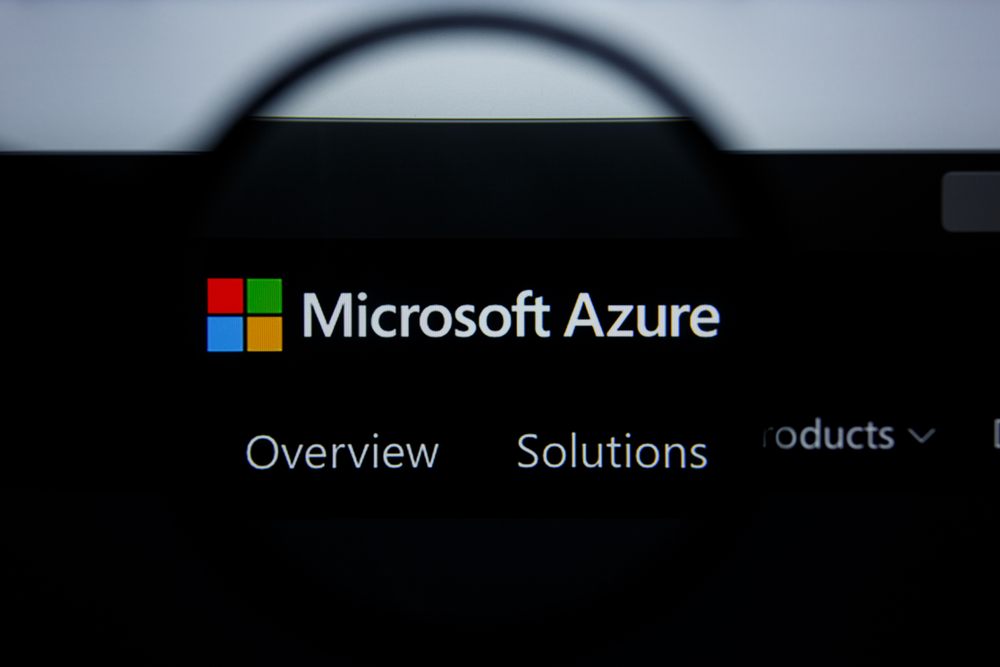Microsoft Build 2020: Every Azure announcement
New features galore, from container management to data analysis


Windows may be where Microsoft made its name, but Azure is where it makes its money. The company’s cloud platform was unmistakably the star of the show at this year’s Build, with a slew of announcements targeting everything from AI development and data analysis to container orchestration and IoT deployment.
Microsoft was keen to show off Azure’s enterprise chops, with the vast majority of features geared towards large organisations with hybrid or multi-cloud infrastructures and large internal development teams. Security and compliance were also high on the agenda, demonstrating the company’s awareness of its customers’ priorities.
Microsoft Build 2020: Newly-announced Azure products
Responsible ML features for Azure Machine Learning
Microsoft is also announcing a suite of new features within its Azure Machine Learning tool to support its ‘Responsible ML’ initiative. It’s launching new tools based on its open source InterpretML framework to help AI developers understand and explain the decisions made by their machine learning models - a crucial step in detecting and removing bias from AI.
They will also be able to use ‘what-if’ analysis to see what happens to a model’s predictions when specific values are changed. Similarly, Azure Machine Learning’s new Fairlearn package can be used to assess the fairness - or otherwise - of AI models and rectify any problems by recommending adjusted models.
Privacy is another key concern regarding AI development, particularly where personally identifiable information is being used to train models. Developed in partnership with Harvard data specialists, the new WhiteNoise differential privacy toolkit aims to allay some of these concerns by allowing developers to inject ‘statistical noise’ into datasets, obscuring genuine personal information with minimal impact on the model’s accuracy.
For developers working with extremely sensitive confidential data, newly-announced capabilities will allow them to build models for confidential datasets without actually being able to see or access the raw data themselves.
Compliance and traceability are key for any enterprise looking to explore machine learning, and Microsoft is set to release new capabilities to support the tracking of assets and details regarding ML model development via an audit trail, as well as new documentation guidelines to make sure that development is transparent and responsible.
Get the ITPro daily newsletter
Sign up today and you will receive a free copy of our Future Focus 2025 report - the leading guidance on AI, cybersecurity and other IT challenges as per 700+ senior executives
Azure Synapse Link
Business analytics is the next gold rush, as companies scramble to start extracting value from their data sets. In order to support this, Microsoft has unveiled Azure Synapse Link, a cloud-based tool for hybrid transactional analytical processing (HTAP) tasks. For non-data scientists, what this means is that customers will be able to run analytics on the real-time transactional data stored in their operational databases with, with one-click configuration and continuous insights.
Microsoft is touting the benefits of cloud-based HTAP in terms of reduced cost and complexity versus traditional on-premise equivalents, and the tool will be competing with other services like AWS’ Aurora.
Azure Synapse Link is available now within Azure Cosmos DB, Microsoft’s cloud-based NoSQL database product, and will be coming to Azure SQL, Azure Database for PostgreSQL, Azure Database for MySQL and other platforms in an unspecified point in the future.
Azure Cosmos DB serverless & ‘autopilot mode’
Serverless computing is the latest innovation spreading through the public cloud market, allowing developers to pay for compute power not based on time or capacity consumption, but on a per-operation basis - ideally suited to sporadic workloads. To support this, Microsoft has introduced a serverless pricing structure for Azure Cosmos DB, which is available for all users now.
Also in general availability is the snappily-titled ‘autoscale provisioned throughput’ pricing model. This was originally referred to as ‘autopilot mode’ when first previewed, in reference to the fact that it automatically maintains capacity and scales up or down depending on the workload, keeping within set SLAs. It can be paired with Cosmos DB’s free tier, and supports a number of new capabilities for cost management. Azure CLI and PowerShell support are also set to be introduced soon.
Azure RTOS embedded development kits
IoT is another nascent sector that Microsoft is hoping to plant its stake in, and part of its strategy for doing so is its Azure RTOS (real-time operating system) embedded development suite for building IoT devices.
To help accelerate this, it’s partnering with a number of OEMs, including Qualcomm, NXP, Microchip, ST and Renesas, to launch new embedded development kits with the goal of accelerating development cycles for new IoT products. RTOS now also includes an Azure Security Center module for vulnerability and threat monitoring - a notable measure given the notorious insecurity of many IoT devices.
Microsoft Build 2020: Azure products now in preview
Azure Stack Hub brings fleet and container management to on-prem Azure
Somewhat counterintuitively, Azure services don’t just run in the public cloud. Microsoft customers can also use Azure Stack Hub to run Azure services and deployments within their own on-premise data centres, effectively acting as a private or hybrid cloud solution but using the same Azure management tools.
RELATED RESOURCE

The IT Pro Podcast: Microsoft Build goes virtual
We dig into some of the most important announcements from this year’s show
Microsoft has previewed a number of updates to the service at this year’s Build event, including a fleet management product to centralise management of all a customer’s Azure Stack Hub instances, support for the partitioning of AMD GPUs and a version of the Azure Kubernetes Service Resource Provider for easier on-premise container management.
These features will be available soon in private preview, while support for Red Hat’s ManageIQ cloud management tools (previously known as CloudForms) is now available as a public preview.
Azure Arc gains Kubernetes and SLES support
Last year, Microsoft unveiled Azure Arc, a single-pane-of-glass management tool designed to let admins run Azure services across a wide range of infrastructures and environments using their existing toolsets snd security policies. The announcement lent further credence to the notion that multi-cloud operations are swiftly becoming the default for enterprises and was met with widespread approval.
At this year’s Build, the company previewed Arc support for Kubernetes and SUSE Linux Enterprise Server, allowing those workloads to be seamlessly managed via Azure Arc across cloud, edge and on-premise environments. Both services are available now in preview.
Azure routing preferences let admins pick their potato temperature
Until now, Microsoft has kept a tight grip on the traffic of any customers using its services, routing it through its own network rather than letting it pass over the public internet to reach its destination - a practice amusingly referred to as ‘cold potato routing’, in reference to the fact that the traffic doesn’t change hands.
Microsoft says this is to ensure the performance and integrity of the traffic, but customers will now be able to choose for themselves whether they want a hot or a cold potato approach for their application traffic, with the preview availability of a new feature allowing the customer to select their routing preference. Performance will vary base on ISP and network performance, but egress costs may be more favourable with a public internet routing approach.
New ‘what-if’ analysis & deployment script templates for Azure Resource Manager
Cloud deployments can be a stressful prospect for many developers, with the frightening prospect of bringing down a critical system if something goes wrong. Two new tools for Microsoft’s Azure Resource Manager are helping to allay those fears; a ‘what-if’ analysis tools that allows devs to preview the effects of a deployment before actually committing to it, and Deployment Scripts to let them set up entire environments by executing Bash or PowerShell scripts within Resource Manager Templates.
Microsoft pushes SQL to the fringes with Azure SQL Edge
Edge computing is becoming increasingly popular among enterprises with remote sites who want to collect and analyse data without having to shuttle it all the way out to the cloud first. To meet these needs, Microsoft is previewing Azure SQL Edge, a lightweight database engine designed specifically for edge deployments that can be run on both ARM and x64 devices in both connected and disconnected environments. It’s only available in selected regions, but in regions where it is available, customers can use it with no transaction costs for the duration of the preview period.
Azure Synapse Analytics previews more data analysis tools
At Ignite 2019, Microsoft unveiled Azure Synapse Analytics, the latest iteration of the Azure SQL Data Warehouse platform and its latest effort to meet its customers’ rapacious demands for data and insights. After being in private preview, the Azure Synapse Analytics’ latest features have now passed into the public preview phase, with integrated Park and SWL engines, built-in authoring for Power BI and serverless data lake exploration.
Azure Maps Private Atlas lets companies chart their own landscape
Azure contains a number of location-based technologies under its Azure Maps umbrella, and they can do more than get you from point A to point B. Its Private Atlas product, for example, allows companies to create maps of private spaces and populate them with sensor data, asset information, inventory details and more, allowing for much more accurate tracking and monitoring of internal real-estate. Azure Maps Private Atlas is now in public preview.
Azure Quantum leaps into preview
Quantum computing is being hailed by many as the next great frontier in software engineering, and Microsoft is hoping to speed its development with the limited preview of Azure Quantum. This suite of cloud services, which Microsoft says is build on 20 years of quantum research, allows companies to start experimenting with quantum development, including educational resources, pre-built ‘quantum-inspired’ solutions and access to software and hardware from partners like 1QBit, Honeywell, IonQ, and QCI.
Azure Active Directory External Identities help bring external partners in from the cold
Active Directory (AD) is the beating heart of many organisations, governing everything from payrolls to printer access. Integrating external partners such as customers and suppliers into AD can be a headache, but with the public preview of Azure Active Directory External Identities, that headache may be a little bit easier to deal with. It enables developers to integrate services for external users into their applications, as well as letting admins manage their entire directory without switching between tools. It’s also set to make collaboration between staff and non-employees easier, thanks to more seamless access and sharing.
Publisher Verification brings blue ticks to apps
Managing application permissions can be a bit of a security minefield, but the public preview of Publisher Verificiation allows developers with a verified Microsoft Partner Network account to mark their enterprise Active Directory apps as verified, which will show up when users are asked to consent to the permissions they request. IT admins will also be able to track the percentage of verified and non-verified apps within their estates, and can even configure policies to bar users from downloading unverified apps.
Microsoft Build 2020: Azure products now in general availability
Azure Peering service brings stability to Microsoft’s SaaS tools
Online services (including Microsoft’s own) have been somewhat wobbly since the coronavirus crisis upended working patterns across the globe, but one of the company’s newest services is aiming to add a little more stability.
The Azure Peering Service, which is now generally available, is aimed at customers who need maximal connectivity and provides automatic optimal routing to Microsoft’s cloud services, as well as traffic insights and analytics, and the capacity to select a preferred service provider for your cloud access.
Azure Kubernetes Service adds support for Windows Server, private clusters and Azure Advisor integration
Kubernetes looks set to be the future of application development, and Microsoft is amping up support for the container orchestration platform within its cloud. Its Azure Kubernetes Service now supports Windows Server containers, allowing devs to lift and shift Windows workloads onto a managed Kubernetes service and take advantage of all of the attendant benefits. It also means that Windows and Linux containers can both be run side by side with the same toolset.
To help beef up security, Azure Private Link also now allows customers to make their clusters fully private by housing their Kubernetes API server inside their Azure virtual network. They will also be able to receive proactive tips and recommendations on container hygiene and security, thanks to a new integration with Azure Advisor.
Azure Spatial Anchors let devs map the world in mixed reality
Microsoft’s forays into mixed reality haven’t been given much breathing room at this year’s Build, but it has announced that Azure Spatial Anchors, which give the ability to persistently map real-world locations at scale, is now generally available. Mixed reality is still in its infancy, but Microsoft is hoping that these tools will encourage more development of the ecosystem.
IoT Hub now supports virtual networks
IoT security is a thorny issue, but thanks to the newly-available support for virtual networks within Microsoft’s IoT Hub, customers now have the added peace of mind that none of their IoT traffic will be going over the open internet.
Microsoft Build 2020: Azure products with updated features
Azure Cognitive Services
AI development remains firmly at the top of Microsoft’s priority list, as demonstrated by the changes to its Azure Cognitive Services, a feature which allows developers to access AI components and functionality from within apps via API calls. The Personaliser API now includes an ‘apprentice mode’, which allows it to learn from existing personalisation solutions in real-time, with the ability to shield it from public view until it’s performing to desired levels.
The Language Understanding module also now has improved labelling for breaking apart complex languages structures to aid speech comprehension, while the QnA Maker service now supports role-based access control for collaborators. Sentiment analysis modules Language Understanding and Text Analytics are now generally available in containers, while Speech to Text and Neural Text to Speech are being extended to new regions.
Azure Cognitive Search is also being expanded with new capabilities, including smoother integration with Azure Machine Learning and the ability to include custom search rankings for domain-specific search results - both of which are currently in preview.
Microsoft Bot Framework
Carrying on the theme of AI development, the Microsoft Bot Framework Composer is now generally available. This open source tool allows developers to quickly get started with the dialogue composition aspects of bots, without having to worry too much about the technical scaffolding supporting them.
The Bot Framework SDK has also been integrated with Microsoft Teams to help devs build bots for the collaboration platform, and no-code bots built with Power Virtual Agents can now be reused as skills by other bots within an organisation. For interactions that require a bot to hand over to a human employee for customer engagement, Microsoft has introduced new integrations with customer service platforms to its Azure Bot Service to make the handover as easy as possible for developers to structure.
Azure Database for PostgreSQL and MySQL
Alongside the changes to Cosmos DB, Microsoft has also announced a number of new features for its PostgreSQL and MySQL products. Azure Database for PostgreSQL is getting new migration tools for moving deployments to Azure Database for PostgreSQL Hyperscale and wal2json logical decoding, the latter of which is now in preview.
Both Azure Database for PostgreSQL and for MySQL are also getting Azure Active Directory Authentication, Private Link support for added security, and three-year terms on Reserved Instances Pricing, all of which are generally available. Organisations will also be able to use their own keys to encrypt data at rest, with previews starting next month.
Azure Digital Twins
Microsoft’s Azure Digital Twins platform will be getting new features this summer too, including support for OPEN Modelling Language, rich query APIs and simpler integration with Azure products like IoT Hub. Digital twinning is in its relative infancy, but the new capabilities will hopefully make it more accessible for Azure developers.
Azure IoT Central
Azure IoT Central offers devs an easy way to create or customise IoT solutions via a SaaS portal, and it now integrates with Azure Sphere and IoT Edge for remote management and security. It’s also getting support for Indoor Mapping, courtesy of Azure Maps, a new template for public safety apps, and a public preview of a new diagnostics tool for accessing raw device data within the portal.
Azure Security Center
For cloud security professionals, Microsoft is upping the capabilities of Azure Security Center with the general availability of the Secure Score API and suppression rules. The former gives businesses a more intuitive way to track and measure their risk and security posture, while the latter allows the rules-based suppression of alerts that admins know are based on safe behaviour.
Azure Cosmos DB
Aside from the new pricing structures and HTAP features, Microsoft has also announced a few smaller-scale updates for Azure Cosmos DB. These include the general availability of customer-managed encryption keys stored via Azure Key Store, access to version 4 of the Java SDK for Cosmos DB, point-in-time backup and restore options and new deletion tools for the Cosmos DB change feed.
Adam Shepherd has been a technology journalist since 2015, covering everything from cloud storage and security, to smartphones and servers. Over the course of his career, he’s seen the spread of 5G, the growing ubiquity of wireless devices, and the start of the connected revolution. He’s also been to more trade shows and technology conferences than he cares to count.
Adam is an avid follower of the latest hardware innovations, and he is never happier than when tinkering with complex network configurations, or exploring a new Linux distro. He was also previously a co-host on the ITPro Podcast, where he was often found ranting about his love of strange gadgets, his disdain for Windows Mobile, and everything in between.
You can find Adam tweeting about enterprise technology (or more often bad jokes) @AdamShepherUK.
-
 Bigger salaries, more burnout: Is the CISO role in crisis?
Bigger salaries, more burnout: Is the CISO role in crisis?In-depth CISOs are more stressed than ever before – but why is this and what can be done?
By Kate O'Flaherty Published
-
 Cheap cyber crime kits can be bought on the dark web for less than $25
Cheap cyber crime kits can be bought on the dark web for less than $25News Research from NordVPN shows phishing kits are now widely available on the dark web and via messaging apps like Telegram, and are often selling for less than $25.
By Emma Woollacott Published
-
 Microsoft is ending support for the Remote Desktop app – here are three alternatives you can try instead
Microsoft is ending support for the Remote Desktop app – here are three alternatives you can try insteadNews Microsoft has announced plans to end support for its Remote Desktop application in just over two months.
By George Fitzmaurice Published
-
 Microsoft's huge AI spending has investors worried – now the company is changing its financial reporting to highlight successes
Microsoft's huge AI spending has investors worried – now the company is changing its financial reporting to highlight successesNews The move comes as investors want more evidence that Microsoft’s AI investment will pay off
By Nicole Kobie Published
-
 Could Python in Excel be a boon for cryptocurrency miners?
Could Python in Excel be a boon for cryptocurrency miners?Opinion Free Python compute resource on offer via Microsoft 365 beta preview – what could possibly go wrong?
By Richard Speed Published
-
 Microsoft defends “negligent” security approach that prolonged vulnerability fix for five months
Microsoft defends “negligent” security approach that prolonged vulnerability fix for five monthsNews The tech giant has refuted claims that its practices have left customers “in the dark”
By Ross Kelly Published
-
 Microsoft Build 2023: Microsoft Fabric and oodles of Azure AI integrations announced
Microsoft Build 2023: Microsoft Fabric and oodles of Azure AI integrations announcedNews Microsoft Fabric aims to greatly improve developer productivity and simplify real-time analytics
By Ross Kelly Published
-
 Five ways to reduce Kubernetes costs
Five ways to reduce Kubernetes costsTutorials With cutting expenditure a business imperative, there are several ways enterprises can reduce Kubernetes costs
By Ross Kelly Last updated
-
 Azure spending notifications for customers unavailable until March, Microsoft warns
Azure spending notifications for customers unavailable until March, Microsoft warnsNews Customers have been advised to manually monitor Azure usage and costs until a fix is implemented
By Ross Kelly Published
-
 Microsoft cloud revenue still sky-high as device sales continue to slide
Microsoft cloud revenue still sky-high as device sales continue to slideNews The company's latest earnings call revealed that Azure cloud products delivered better-than-expected results while numbers in other divisions fell substantially
By Ross Kelly Published